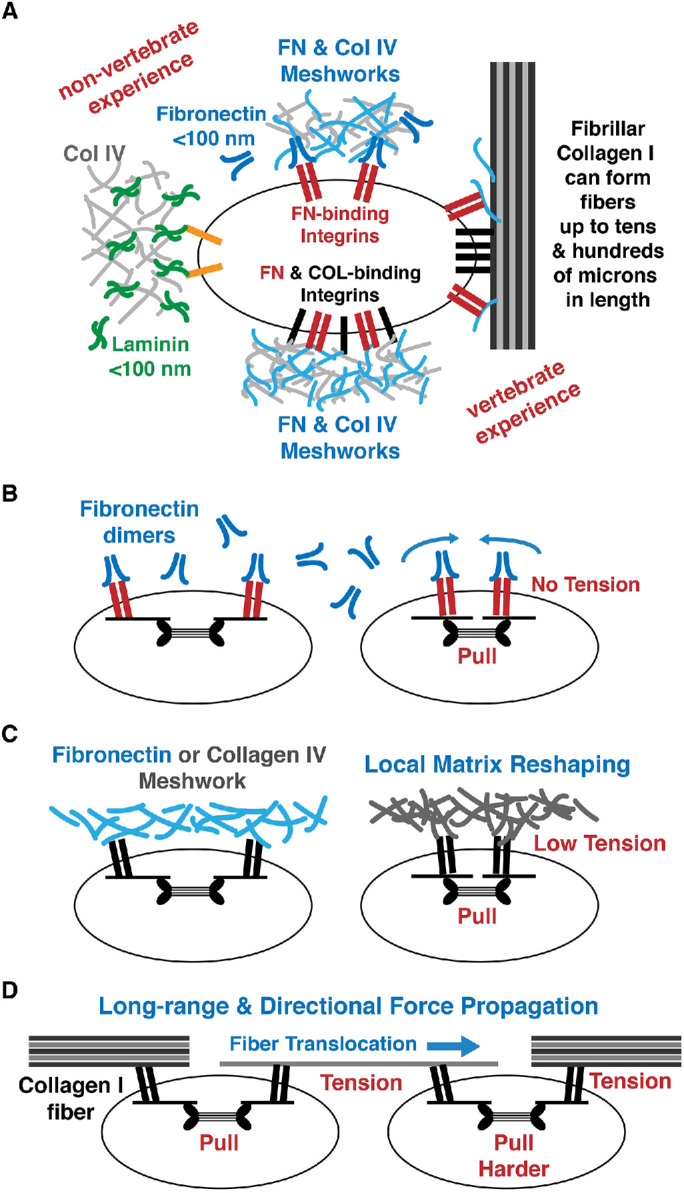FIGURE 2:

Collagen I forms stiffer, thicker, and longer fibers to support the generation of tension and long-range force propagation. (A) In nonvertebrates, cells can interact with laminin and fibronectin (FN) via laminin-binding and fibronectin-binding integrins. However, nonvertebrates do not have collagen-binding integrins and cannot exert force on the collagen (COL) IV matrix. Vertebrate cells have both fibronectin-binding and collagen-binding integrins and can bind directly to fibronectin and collagens (see the text for details). (B) Pulling on fibronectin-binding integrins that are bound to fibronectin dimers results in movement of the integrins with no change in tension in the matrix. (C) Pulling on collagen-binding integrins will generate tension in collagen IV meshworks (see the text for details). Pulling on a distensible fibronectin network may also result in the generation of tension in the matrix (see the text for details). (D) Long-distance force transmission and tension generation is supported by collagen I fiber attached to two cells via collagen-binding integrins. Pulling a collagen fiber by a cell can translocate the fiber.
